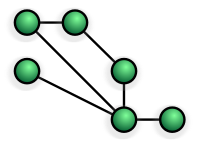
Physarum polycephalum for Studying the Function of Histone Modifications In Vivo.
Sign Up to like & getrecommendations! Published in 2017 at "Methods in molecular biology"
DOI: 10.1007/978-1-4939-6630-1_15
Abstract: Histone modifications have been widely correlated with genetic activities. However, how these posttranslational modifications affect the dynamics and the structure of chromatin is poorly understood. Here, we describe the incorporation of the exogenous histone proteins… read more here.
Keywords: polycephalum studying; histone modifications; histone; physarum polycephalum ... See more keywords

When are ants better than slime moulds?: Comment on "Does being multi-headed make you better at solving problems? A survey of Physarum-based models and computations" by C. Gao et al.
Sign Up to like & getrecommendations! Published in 2019 at "Physics of life reviews"
DOI: 10.1016/j.plrev.2019.03.011
Abstract: Computer scientists and biologists have long been excited by the idea of using nature as inspiration for the design of optimisation algorithms. Starting with the ground-breaking advent of the ant colony optimisation algorithm (ACO), which… read more here.
Keywords: physarum based; physarum polycephalum; slime; optimisation ... See more keywords

Network topology enables efficient response to environment in Physarum polycephalum
Sign Up to like & getrecommendations! Published in 2023 at "Physical Biology"
DOI: 10.1101/2022.11.09.515897
Abstract: The network-shaped body plan distinguishes the unicellular slime mould Physarum polycephalum in body architecture from other unicellular organisms. Yet, network-shaped body plans dominate branches of multi-cellular life such as in fungi. What survival advantage does… read more here.
Keywords: topology; network; network topology; physarum polycephalum ... See more keywords

A lumped parameter model of endoplasm flow in Physarum polycephalum explains migration and polarization-induced asymmetry during the onset of locomotion
Sign Up to like & getrecommendations! Published in 2019 at "PLoS ONE"
DOI: 10.1371/journal.pone.0215622
Abstract: The plasmodial slime mold Physarum polycephalum exhibits strong, periodic flow of cytoplasm through the veins of its network. In the special case of mesoplasmodia, a newly described starvation-induced, shape-constant morphotype, this periodic endoplasm streaming is… read more here.
Keywords: locomotion; model; flow; physarum polycephalum ... See more keywords

Learning in the Single-Cell Organism Physarum polycephalum: Effect of Propofol
Sign Up to like & getrecommendations! Published in 2023 at "International Journal of Molecular Sciences"
DOI: 10.3390/ijms24076287
Abstract: Propofol belongs to a class of molecules that are known to block learning and memory in mammals, including rodents and humans. Interestingly, learning and memory are not tied to the presence of a nervous system.… read more here.
Keywords: physarum; organism; propofol; model ... See more keywords